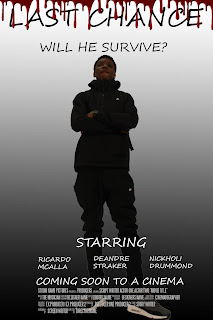TV: Capital - representations
capital episode 1: key scenes
Scene 1: opening sequence 00:30 – 4.49
Scene 2: work in the City 6.28 – 8.10
Scene 3: “Which of those isn’t absolutely essential?” 14.00 – 15.35
Scene 4: asylum 18.03 – 19.42 AND 31.10 – 32.40
Scene 5: “What use is 30 grand?” 36.40 – 39.00
Capital: Representations blog task
1) Watch episodes two and three of Capital and write a 50-word summary of each.
Episode 2 - Arabella returns home where she finds a nanny who is now taking care of her children whilst her husband deals with the shock of his 'small' bonus. Quentina tries to defend herself in the case she now has for working and staying in the country illegally. The Kamals get a vist from their mother. Armed police raid the Kamals home and arrest the three sons.
Episode 3 - Roger gets fired from his job for ‘gross negligence’ after his young assistant is charged with committing fraud within the company. Shahid is arrested and held under accusation of terrorism due to his friend Iqbal who was staying with him and searching radical topics. Quentina is not shown to overcome her case. The money found in the old lady's house is given to her daughter despite the builders conflicting thoughts.
Episode 1 -
Scene 1: opening sequence 00:30 – 4.49
London society has become more diverse over the ages due to many factors such as immigration, Rise of London house prices and how they're at an ultimate high. the flashback and colour suggests that the past was better for society
Scene 2: work in the City 6.28 – 8.10
Roger is typical rich white British business man a part of the banking system and high wealth in certain areas. "Bonus season" "Work hard, play hard" He sees the Christmas season revolving around money, not family.
Scene 3: “Which of those isn’t absolutely essential?” 14.00 – 15.35
Wealth and ignorance of the wealthy - negative representation of this group in society. "You'd be surprised how little a million pounds can go these days" - audio codes representing these people as out of touch and stuck up.
Scene 4: asylum 18.03 – 19.42 AND 31.10 – 32.40
Place: A different unseen part of London - as she leaves her lodging accommodation we see a lot of people living in a small space - immigrants. Issues: Immigration - not being able to work, risk of being sent back, poor living conditions. Financial and sexual exploitation. Asylum seekers.
Scene 5: “What use is 30 grand?” 36.40 – 39.00
"Fundamentally not fair", "It's not a question of greed, it's justice" "30,000" - this amount of money would be a lot of use to the less fortunate.
3) How does Capital use stereotypes? Do the characters and issues represented in Capital reinforce or subvert the stereotypes we typically see in the media?
Capital uses the stereotypes to show how the wealthy people in London seem to be stuck up and insensitive to the world of struggle around them as roger is shown to be dramatically upset about the 25 thousand bonus he got. and the stereotype of the illegal; immigrant and the polish builder is clearly evident here.
Comments
Post a Comment